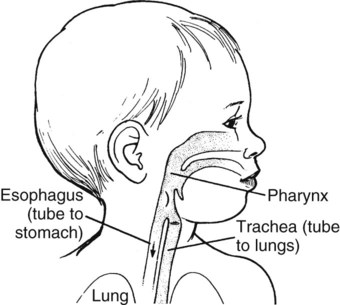This section may be photocopied and distributed to families. • Temperature is above 100.4° F. • Yellow or green mucus is present. • A change in the smell of the mucus occurs. • The amount of mucus increases. • The child is very irritable. Suctioning keeps the airway (nose and mouth, Figure 1) clear of mucus to help the child breathe more easily. Suctioning is not done routinely, but only when needed. Suction when the following occur: • The child is having trouble breathing. • The child appears very restless. • The child has difficulty eating or sucking. • The child’s color becomes paler. • The child’s nostrils flare (spread out).
Wilson & Hockenberry: Wong’s Clinical Manual of Pediatric Nursing, 8th Edition
Patient Teaching Guide
Suctioning the Nose and Mouth
Suctioning
![]()
Stay updated, free articles. Join our Telegram channel

Full access? Get Clinical Tree


Nurse Key
Fastest Nurse Insight Engine
Get Clinical Tree app for offline access


 teaspoon of salt to each 2 cups of water when you are heating the water. Let cool, then pour into a clean glass jar and cover. Store the sterile saline in the refrigerator.
teaspoon of salt to each 2 cups of water when you are heating the water. Let cool, then pour into a clean glass jar and cover. Store the sterile saline in the refrigerator.